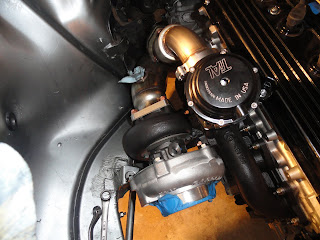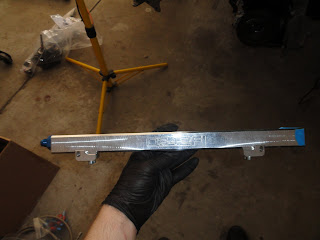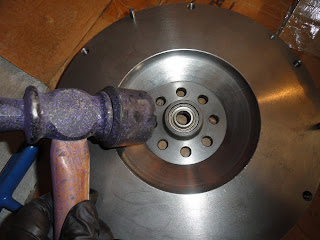These are Ignition coils, this car originally used a distributor, however with the new ECU (engine control unit) the engine ignition will be controlled electronically.
This is the result after i assembled it. not sure if it matters but the coil connections where closest to the firewall for this application. Had to file down some metal tabs at the end to assemble this, not a problem, really easy. just wear a particle respirator because metal particles can be slightly dangerous.
You will need one of these, A tap and die set, taps make female connections and dies make male connections you will also need the corresponding drills as specified in the supplied glossary.
I however did not have metric drills and all I had were standard and didn't want to make a trip to the store. After doing some googling I found the closest size between metric and standard, Will be different for everyone. so pick out your bolts you wish to use and Match the threads on your tap. then find your corresponding drill.
rest the thread of the tap and the screw, this will tell you if it the right size. Has to be a automobile bolt, once you find your drill and tap get a scrap piece of metal to test this on just to be sure, you only get one attempt on your automobile.
Use one of these also to check the threads. it comes in the kit. its called a thread gauge.
Keep you drill well oiled or you will warp your host metal or the drill bit.
keep your drill level while drilling, I had a level on my drill to help.
I drilled the hole on a scrap piece, keeping it well oiled.
This is the tap and the tap holder.
Tape a level to the unit and hold it up where you want and mark the holes.
I used string to map out a lot of the engine in the engine compartment to make sure the spot i picked would not get in the way of any other parts...that would be bad ;)
one of the holes that i was tapping was hard to get to so I just used a vice grip instead of the tap holder.
stick the tap in the hole and turn it to thread the hole.
I used this to cover up the old welds i broke off to get the old battery stand off.
Like this!
then painted it.
This is the result, after all that work, this will make the cars fuel ignite. woot.




























































